Dropping the paddler’s box
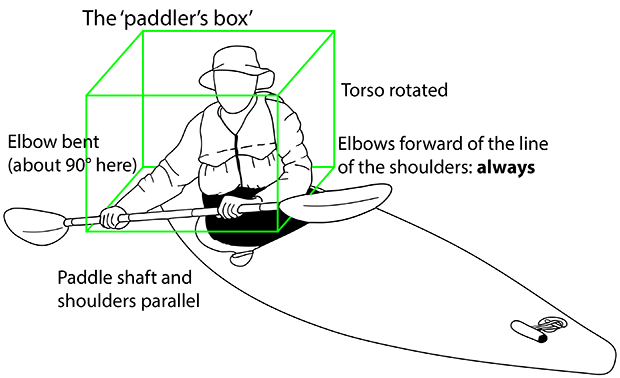
TThe paddler’s box concept has been around for some time: I first learned of it in the mid-1990s from a VHS video by Kent Ford, et al. From the video demonstration it made sense, with its emphasis on torso rotation and keeping the hands and elbows within the box, always in front of the body
It was some time later that I saw a diagram of the ‘box’ superimposed on a photograph in a book I was browsing in a book shop. I've long forgotten the names of the book and its author, but that diagram led to the one I drew for the ACAS (now PAQS) resources, and which is included, as Figure 2, in Book 6 of the latest version. (Figure 3 in that book belongs on the next page, beneath the ‘Holding the Paddle’ heading: one of many examples of poor layout.)
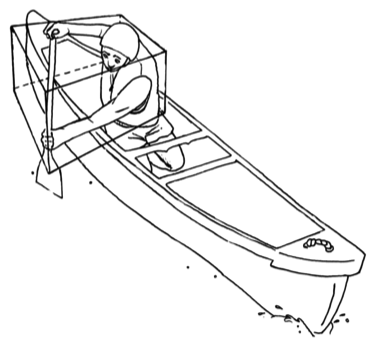
Later again I came across this diagram in The Canoe Handbook by Slim Ray. The Overside or Cross-bow Draw is impossible without torso rotation.
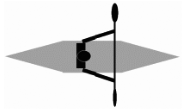
But ask the average paddler, even some Instructors, for an explanation and you’ll usually hear something vague, even meaningless. Watch them paddle and you may see the box badly distorted to the point of collapse. Go searching on the web and you’ll find similarly vague and glib descriptions, and diagrams like the one at right, a total waste of pixels.
We need something simpler and easier to visualise.
What are we trying to achieve? The aim is to reduce shoulder injuries by limiting the range of movement and loads placed on the joint, through applying three basic rules:
- Keep the elbows below and forward of the line of the shoulders at all times
- As far as possible, keep the paddle, or at least the plane of the paddle, parallel to the line of the shoulders
- Rotation, rotation, rotation.
Three strokes where paddlers often put elbows behind the body are Stern Rudder, Reverse Sweep, and Reverse paddling by putting a straight arm behind the body, with little or no rotation. Take another look at that first diagram, which is based on a photograph of an aggressive Stern Rudder stroke. Note the rotation, bent elbow, and paddle shaft near parallel to the shoulders. Here’s a top view, with and without adequate rotation.

Another dangerous, really dangerous, stroke was the old High Support, as pictured in This is Canoeing (page 60). By 1982 when the book was published the Farrances should have been aware of the hazards. Don’t ever do this. (Perhaps the book would now be better named That was Canoeing.)
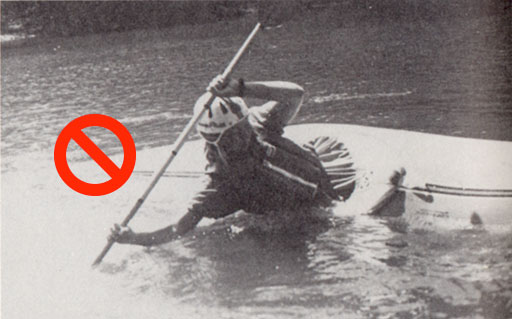
What is now called ‘High Support’ is better termed ‘Support with the drive face’: top elbow close to the body, working elbow well below shoulder level and the real work being done by the body.
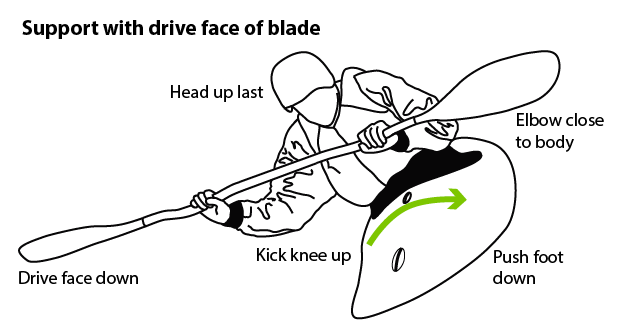
I am not alone in suggesting it is time to abandon the paddler’s box and the incoherent descriptions that make it hard to visualise, and instead concentrate in our explanations and demonstrations on the key rules: rotate, elbows forward and down, and shoulders and shaft parallel.
For a web resource on shoulder safety try the one by Wayne Horodovich at paddling.com/learn/shoulder-safety. There are other good items on the site as well.